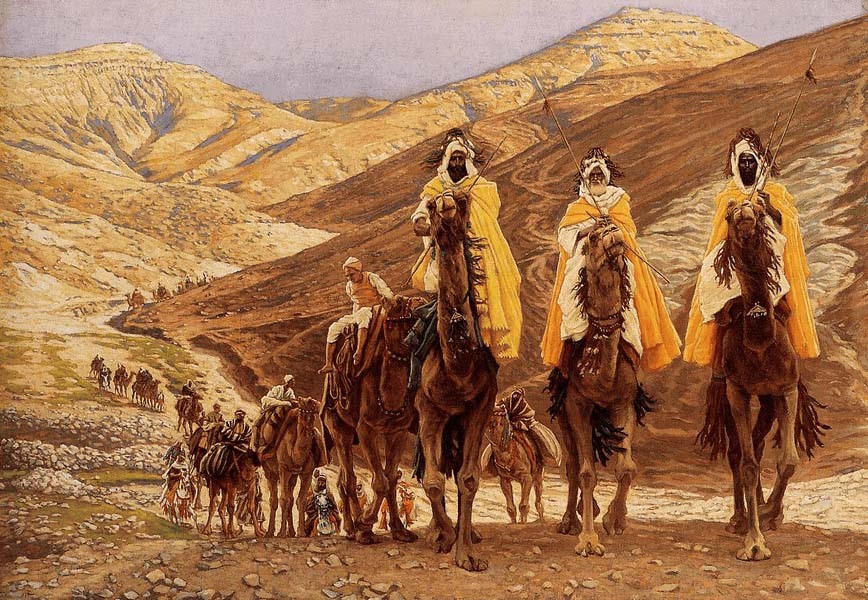
When you think about, I Saw Three Ships Come Sailing In is a rather unusual Christmas carol.
There are no boats in the accounts of Jesus’ birth. The Jews of Bible times, in fact, were generally terrified of open water. Only fishermen routinely set sail, and that was on the comparatively placid lake called the Sea of Galilee.
One of the carol’s verses declares that the ships come sailing into Bethlehem. That’s an interesting picture, since the City of David sits high and dry in the Judean Mountains, 2,543 feet above sea level.
The number “three,” however, provides some clues to the song’s message.
It echoes the traditional number of Magi (or “wise men” in the King James Version). Sometime during the 1100’s, three sailing vessels were said to have transported the purported bones of the Magi to the cathedral in Cologne, Germany, where they became holy relics. By the mid-1600’s, wandering English minstrels had crafted the familiar folk song and lyrics we have today to commemorate that voyage.
There’s another possibility, however.
Camels, which exhibit an extraordinary capacity to travel great distances between drinks of water, are known as “ships of the desert.” Some historians believe the “three ships sailing in” represent the Magi’s visit to the young Jesus, which is reported in Matthew 2:1-12.
It’s worth noting how many questions still swirl around this event.
For instance, how many actual visitors from the east were searching for Jesus? Matthew doesn’t say. But because they brought three gifts, the number stuck. Later tradition even assigned them names: Melchior, Caspar, and Balthazar. There’s no evidence such individuals ever existed.
Were they kings? The Bible uses the term magioi, from which we get Magi (as well as the word “magic”). They were almost certainly not royalty, but rather dedicated students of the night skies.
We can only be grateful that John Henry Hopkins, Jr., who wrote We Three Kings in 1857, chose not to call his carol We Undetermined Number of Astronomers from Present-Day Iraq.
What was the star they saw, the one that guided them on their journey to Bethlehem?
Some theorize it was a supernatural beacon. Others suggest it was something sufficiently unusual to attract their attention. Perhaps it was a conjunction of planets – the close alignment of two or more bodies in our solar system. This year on the winter solstice (December 21) we’ll be treated to what astronomers are calling “the great conjunction.” Jupiter and Saturn will appear so close together above the southwest horizon after sunset that they may seem, at first glance, to be just one body. Of course, they’re not literally close together. Saturn (the dimmer of the two) is a whopping 401,592,178 miles farther away from us than Jupiter. That’s more than four times the distance from the earth to the sun. But this “great conjunction” will be the closest visible alignment of Jupiter and Saturn since the Middle Ages.
What we know for sure is that those who came from the east to visit Jesus were searchers. And they brought special gifts.
Gold, incense (or frankincense, as the older English versions have it), and myrrh are not the kinds of gifts one would generally order online from Babies R Us.
Jesus, of course, was no ordinary child. So what’s the significance of the gifts?
Gold is a gift worthy of a king. In truth it’s prized by most everyone – from ancient times to today’s Wall Street speculators.
Incense is a gift associated with worship. It was extravagantly expensive. Worshippers would put a pinch of incense into a flame, and its sweet smell would connote the beauty of a relationship with God.
Myrrh is the most counterintuitive of the gifts. It was a burial spice. Why in the world would one give something like that to a child? From day one, the death of Jesus – and his subsequent resurrection – was part of his story. The fuller meaning of Jesus’ life is already embedded in the Bethlehem accounts.
The ultimate meaning of Jesus’ life was well known to those who crafted these lyrics almost 400 years ago:
I saw three ships coming sailing in on Christmas Day, on Christmas Day
I saw three ships coming sailing in on Christmas Day in the morning.
And what was in those ships all three on Christmas Day, on Christmas Day?
And what was in those ships all three on Christmas Day in the morning?
Our Savior Christ and His lady on Christmas Day, on Christmas Day
Our Savior Christ and His lady on Christmas Day in the morning
Pray, wither sailed those ships all three on Christmas Day, on Christmas Day
Pray, wither sailed those ships all three on Christmas Day in the morning
O, they sailed into Bethlehem on Christmas Day, on Christmas Day
O, they sailed into Bethlehem on Christmas Day in the morning
And all the bells on Earth shall ring on Christmas Day, on Christmas Day
And all the bells on Earth shall ring on Christmas Day in the morning
The Irish singer Orla Fallon offers this lilting Celtic version of the familiar carol.
People sometimes sigh, “One day, when my ship comes in, everything will be OK.” On that day, they assume, they will finally experience love, joy, and peace.
Here’s the good news:
Love, joy, and peace can be ours right now as we abandon ourselves to the One whose arrival at Bethlehem is the centerpiece of every carol.
